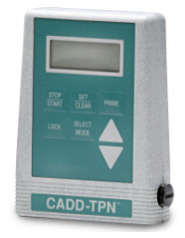
Would rather tolerate the discomfort.Īt 27, he seems to be fighting dying while being OK with his impending death.

He does not want to be out of control, doesn't want to feel at all fuzzy. I didn't see any of the usual flags for concern about "loose" morphine in the house (makes me wonder why there's little concern for Roxanol at twice the strength, but worry about other forms ), and I did also ask.Īs for increasing the dosage, he resists that. The wife is very young also, but has learned a lot and the onco has confidence in her. I thought they said he uses the prn a lot, turns out it is still a little rare. This CADD is used generally for chemo-the onco's office loaned it.
#Cadd pain pump manuals#
User manuals are confusing, inadequate, outdated, or unavailable.In the example below, it is unclear if the user is confirming the warning message or the infusion settings. Warnings are displayed so often that users come to ignore them (similar to “nuisance alarms”), are not detailed enough to prevent misuse, or represent values in ways that are unfamiliar to the user.In some cases, programmed settings are lost when a user turns the pump off, and the infusion settings have to be re-entered after the pump restarts. For example, the “Start Infusion” key may be located next to the “Power” key, and a user may turn off the infusion pump instead of initiating infusion. The infusion pump screen design is clunky or confusing to users, causing a delay in therapy.False (“nuisance”) alarms may decrease users’ sensitivity to all alarms. For example, an alarm indicating low battery charge may not be displayed in time for a user to prevent pump shut-off during a critical infusion while a patient is in transport. Inadequately designed alarm functions and settings cause users to miss problems or respond late.For example, an instruction to attach a tubing set in all required tube holder-clips before closing the pump’s access door may be unclear, resulting in clamped tubing and under-infusion.

User instructions or cues for mechanical set-up are not specific or clear enough.Users with long fingernails may damage the print on the pump keys, making them unreadable. For example, cleaning the pump, as the user-maintainer believes is acceptable practice, may damage the pump, making it unreliable for clinical use. Pump labels or components become damaged under routine use.For example, the user may enter weight in pounds when the infusion pump requires it in kilograms. The infusion pump screen doesn’t make clear which units of measurement the user is expected to enter.The design of the infusion pump screen confuses the user, or the infusion pump does not respond as it should (i.e., with a warning or alarm) when inappropriate data is entered.Inadequate user interface design (" human factors" issues ): The infusion pump generates an occlusion alarm in the absence of an occlusion.


The infusion pump fails to generate an audible alarm for a critical problem, such as an occlusion (e.g., clamped tubing) or the presence of air in the infusion tubing.For example, the user programs an infusion rate of 10 mL/hour, but the device registers an infusion rate of 100 mL/hour. The infusion pump interprets a single keystroke as multiple keystrokes (a problem called a “key bounce”).This occurs in the absence of an identifiable problem.
#Cadd pain pump software#


 0 kommentar(er)
0 kommentar(er)
